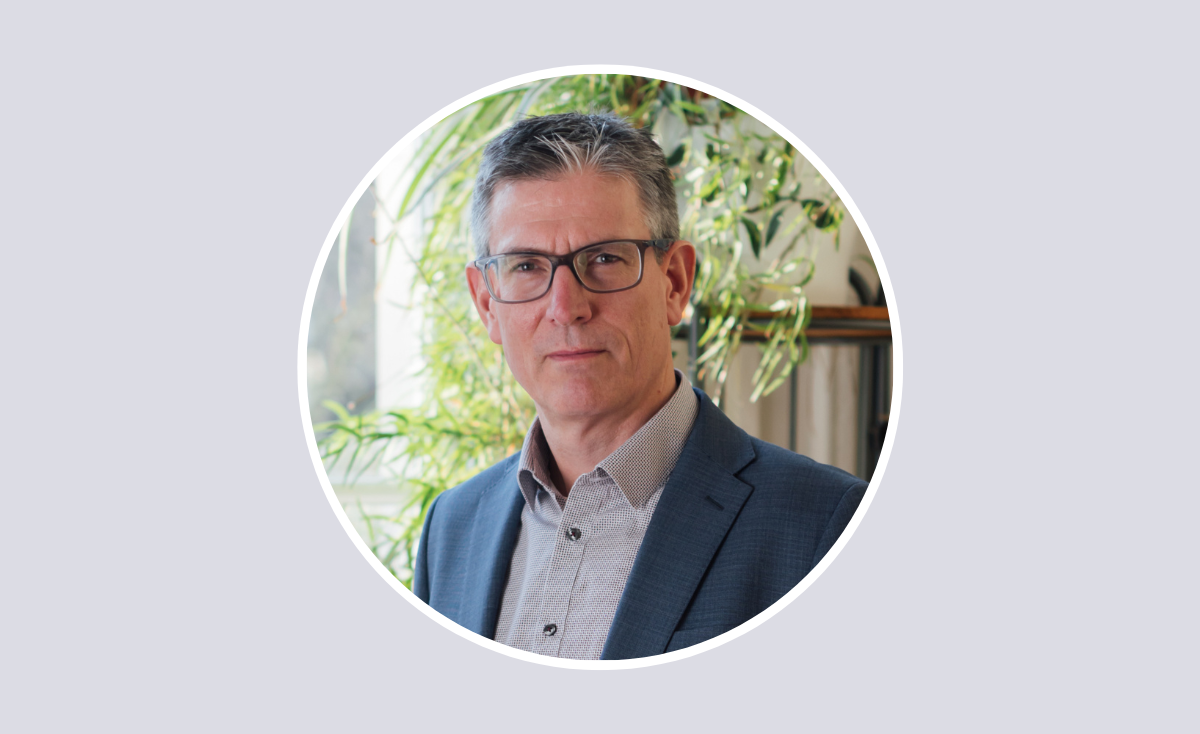 Seb Beloe, Head of Research, WHEB Group Asset Management.
Seb Beloe, Head of Research, WHEB Group Asset Management.
Andrew Putwain: Can you explain your background, your role, and WHEB Group’s ethos around its investment and asset management style?
Seb Beloe: I had a ten-year career in consulting, advising corporates and multinationals on strategies around sustainability in the US. In 2008, I joined Henderson Global Investors as Head of Sustainable and Responsible Investment Research.
We moved to WHEB Group in 2012. The team came across where we joined an existing small team to relaunch a global equity strategy that we have been running ever since then.
In terms of my role, WHEB is a small business, and we run £1.2 billion in one central strategy. I wear multiple hats: one is within the impact investment team, and another is with the senior management team as well.
My role with the impact investment team involves different things. I’m spending a lot of time on regulation at the moment, as well as SDR and working on our prospectus. I do a lot of our communications as well, such as our 10th Impact Report. I collate the information and write it.
In terms of working with the Impact Assessment Team, we have a number of tools we've developed to analyse companies from an impact and ESG perspective. I lead the work to develop those tools and support their use, which includes identifying useful external third-party data sources, quality control, and conversations with the team.
"The majority of large companies are not investable for us because we're looking for companies where that product is delivering a positive impact."
Impact investing is a particular way of investing, and it's been given more regulatory support – particularly this sustainability impact label that's coming through within the UK FCA’s sustainability disclosure requirements (SDR) framework. One of the labels is explicitly ‘sustainability impact’.
Essentially, there are two elements to it: first, investing in companies that are delivering a positive impact through the products and services that they sell. We have a tight definition of what that means, so something like 87% of the MSCI World is not investable for us. The vast majority of large companies are not investable for us because we're looking for companies where that product is clearly delivering a positive impact and that could be around reducing greenhouse gas emissions (GHG). It's a strict definition of positive impact.
Then, there's the second piece, which is what we’re doing to accelerate impact through engagement and stewardship work. For example, there is the impact of the companies – which is core – and then there's what we are doing as an asset manager to support that. That's the core of our philosophy.
Our average holding period is around seven years, so we’re long-term investors. We have a mission as investors and as a business ‘to have a positive impact and advance sustainability through positive impact investments’.
Andrew: As Head of Research, how do your day-to-day duties fit within the operations and investments of the company and your interaction with frontline staff overall? What do you need to do your job in a way that helps the whole company?
Seb: We've made a rod for our own back because when you talk about being an impact investor, you're increasing the change that you need to take on board and understand and use in your investment process – and clients want to hear about all of that, so it’s a large undertaking.
So having information on traditional commercial and financial characteristics of the fund and individual companies is of great interest to our clients. On top of that, they also ask: ‘Why do you invest in particular companies from an impact point of view?’, ‘What negative screens do you use?’, ‘What is the impact narrative indicator that you're using?’, and ‘What is your carbon footprint?’.
"We have an analytical tool called our impact engine, which is a framework for collecting information on the impact of the products and services that a company sells."
There’s a spectrum of data points that our analysts and portfolio managers need – and that our clients want to understand. The data industry has developed enormously over the last five years. They have become the ‘go to’ source for answers, particularly in the more traditional areas like negative screens so data providers support us and do the underlying research.
When it comes to questions around impact, they're still more bespoke. We have one data provider, but often it's our analysis that people are after, not an underlying data provider
We have an analytical tool called our impact engine, which is a framework for collecting information on the impact of the products and services that a company sells. When we want to analyse a company’s impact, we put it through the impact engine and that allows us to collate and corral this information in a way that is useful in terms of the stock selection process, and also in terms of reporting to clients. For example, why do you invest in this company? What is the positive impact that you're focused on with this particular company?
Those are things that we have to think about, and my role is to make sure that the analysis has been applied consistently across the different companies that we look at.
Andrew: Is your database only available to your team, or is it available companywide – where anyone can log in and look up ‘company XYZ’?
Seb: The information is populated by the analyst and anyone in the company can look at it. It gives the rationale for why a company has been scored in a particular way.
It then goes on to our Factset RMS system, which is a database system it gets linked with so we can download it and model it into spreadsheets.
Andrew: Is the scoring system something you created internally, or have you adopted a benchmark from somewhere?
Seb: There hasn’t been enough methodology developed industry-wide to adopt any external metrics. There was a research project called the Impact Management Project, which produced a similar framework at quite a high level.
The tool has six questions that you have to answer and then score, and we expect over time for it to become more and more quantitative and less qualitative.
For our own work, we'll use all sorts of data sources that we can find – so, for example, one of the questions is around “how critical is the impact to the end beneficiary?”. If you're looking at greenhouse gas emissions, one way that we assess that is by looking at what proportion of total greenhouse gas emissions this particular technology helps to reduce.
"We're trying to find additional data sources that we can use to replace some more qualitative judgments that we sometimes have to make."
For example, if you're looking at a heat pump manufacturer, the pumps are used in buildings to decarbonise heating in buildings, and almost any building can use a heat pump and buildings represent something like 20% of greenhouse gas emissions, so for example, in our system that’ll equate to a score of two or three.
Similarly, when we're looking at healthcare, we look at the global disease burden, so what proportion of global disease is caused by a particular cancer? Or diabetes or some coronary condition, and again, that would have equated to a particular score, so if more than 5% of the global burden of disease is linked to this particular condition then it gets a score of three.
There are reputable global datasets, and we get that information from the World Health Organization (WHO) and the UN, and we can use it to score how impactful a particular company is.
We're trying to find additional data sources that we can use to replace some more qualitative judgments that we sometimes have to make.
Andrew: You commented on the European Securities and Markets Authority (ESMA) naming guidelines for funds that were recently released – saying that they didn't go far enough. Can you give us more information on your stance here?
Seb: Our view is that, fundamentally, when a client wants to invest in a way that is sustainable, they expect the whole fund to be invested that way, they don't expect it to be 70% and the rest can be invested in anything else. So, at the fund level, we think that it helps to have a much higher threshold.
"Some Article 8 funds only have 10% of the funds invested in a way that meets the sustainability objective, so this is better than that but there’s room for improvement."
We do recognise that if you are putting together fund-of-funds or other kinds of multi-asset structures then you may need to have a bit of wiggle room around it – for example, the use of cash. Or, if you're using something to offset risk in some way, it makes sense to have a threshold that you must go beyond but when you're talking about an individual fund you either do or you don't and so that's why we were arguing for a higher threshold.
Some people really do push the limits of the definition when it’s 10-20% of the fund is sustainable. Some Article 8 funds only have 10% of the funds invested in a way that meets the sustainability objective, so this is better than that but there’s room for improvement.
Andrew: You said there are no guidelines or benchmarks. Is that it's not one of those things that's going to develop slowly and awkwardly?
Seb: This is how things evolve. Typically, things aren’t born perfect. It's a process of evolution. Things like the SDR are helpful because they provide structure and definitions.
There are things like the market itself hasn't worked out what it is. When we report our performance, we have to report it against the MSCI world, which, as I said earlier, is 87% different to what we do so it's not a good comparison. But there isn't a good alternative, and a lot of global equity investors are looking at that as their benchmark.
We can't own companies like Microsoft, Apple, and Amazon – because we don't think that they're providing a solution, environmental or social, which makes it difficult for us to put ourselves in that MSCI box, so to speak.
It's all about how you get from where we are today to a market that understands what we do, understands how we do it, understands how to think about it in comparison to other investment styles, and we’re still quite a long way from getting all those things in place.
Andrew: Building on this, what are some other aspects of impact investing and ESG/sustainability that, in your view, need more work to achieve their goals? Where are the shortcomings, especially for asset management firms?
Seb: There are two main things that you need the industry to mature on. The first is around thresholds of impact. Within the greenwashing guidelines, you have to make sure that you're clear and not misleading or imbalanced in what you report.
You can’t only mention the good things that a company does and not the bad things, but we don't have a good threshold for that. When does something become bad? Because every company will have some negative impact somewhere; we’re all using electricity that is, at least in part, derived from fossil fuels. We all have a carbon footprint.
"There are examples where we've had companies red-flagged by various ESG data providers as having this serious issue, so you look into it and it’s a spillage or some brake fluid."
At what point does that become a notable bad and a material bad? The industry as a whole has not focused on where that threshold is.
There are examples where we've had companies red-flagged by various ESG data providers as having this serious issue, so you look into it and it’s a spillage or some brake fluid. That’s unfortunate but it’s not a fundamental issue.
There was a story of a company where brake fluid spilt onto the ground, but it got contained and there was no environmental damage, but this was the reason the company was red-flagged as a high-risk environmental investment.
There's a threshold question that people need to work on and establish.
Another example is engagement and stewardship. There's a lot of appetite for data that shows, “I did this thing. I talked to this company, and this company changed its position or its policy on something”.
So, for example, we do a lot of work around climate change and getting companies to commit to net zero carbon emissions. We write letters and talk to CEOs – and if the company changes their position in the way that we want to, we would be cautious about saying it's because of us, because the company makes decisions for all sorts of reasons, and it would be rare and probably not healthy to change their position on something just because one investor is telling them to.
You expect loads of other investors, stakeholders, employees, and clients to be important in that decision as well. But there is a lot of desire to say, it was because of me, and the causality was directly to me.
Again, the industry needs to mature and recognise that that is very, very rarely the case.
We talk about correlation where something happens and it's consistent with what we asked for, but we're not suggesting that we caused it. Those two things are correlated, but there may not be causality. As an industry we need to get more comfortable with that being a good outcome, but you can't say that it was because of you.
Andrew: What practical day-to-day advice for those working in your field do you have about achieving goals? For example, what are some of the lessons you’ve learned or the golden rules you work by?
Seb: There's a great desire in financial markets to simplify as quickly as possible and to say, “give me a rating, a score, a number”.
Quite often, those are red herrings, because you need to understand what's going on underneath them in order to form a view of whether that information is useful or not.
" There's this appetite for sustainability and ESG that has come on suddenly. I remember doing this in the 2000s and no one cared, and then it became the hot thing."
People have gravitated towards ESG ratings as a simple way of factoring ESG into a decision but quite often it's based on poor data or the wrong data. I would caution people about the need to understand the underlying issues and how they have a bearing on the likely future performance of the company, rather than relying on ratings.
It's a patience thing too. There's this appetite for sustainability and ESG that has come on suddenly. I remember doing this in the 2000s and no one cared, and then it became the hot thing, and everyone had to have a sustainability strategy.
Now it's fallen off a cliff, and people aren’t sure whether it matters or not. It will come back.
It's about building a foundation that is solid and rooted in investment performance and the commercial reality of the world in which businesses operate. Building a solid foundation, rather than being driven by the headlines that come and go.
Andrew: Can you talk to us about the Sustainability Disclosure Requirements (SDR) and what you see as the big topics to focus on?
Seb: The greenwashing things in particular, which came at the end of May, are extensions of existing requirements. It’s a sensible decision around not using misleading language. The industry has been pushing green claims with little to no connection between what was being said and what was happening in practice.
I hope it doesn't push things in the wrong direction; everyone thinks that ESG is yesterday's story and if you think you’re going to be hit by regulation then that's a concern as people might not bother at all.
We think it's quite right with the regulation requirements, for managers to back up their claims when they make them, so we’re pretty supportive of that.
SDR is a bit more difficult. It's a bit more complicated. We're still supportive, but we'll see how it all plays out over the next six months or so as people begin to use these labels.
Please Sign In or Register to leave a Comment.
SUBSCRIBE
Get the recent popular stories straight into your inbox







